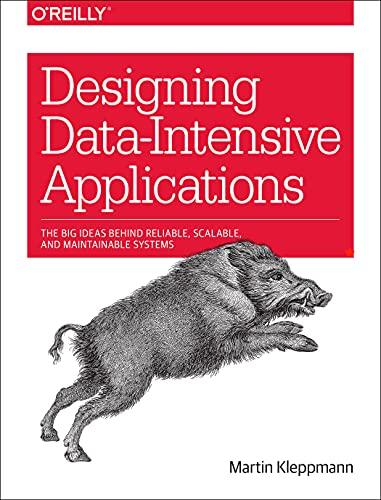Answered step by step
Verified Expert Solution
Question
1 Approved Answer
Part A: Relational Database Design 1 . Answer questions below regarding the relational database design for the R University book loan management database. Book (
Part A: Relational Database Design
Answer questions below regarding the relational database design for the R University book loan management database.
Book CallNo Title, AuthorID, AuthorBio, Location, CopyBarcode, Status
Semantics of attributes is selfexplanatory. Some additional notes are as follows:
A call number is the combination of letters and numbers that indicates where books can be found in the library.
A book may have multiple book copies. Each book copy has a unique copy barcode. All copies of a book share same call number.
A book may have one or more authors and an author can write more than one book. Each author has some description AuthorBio
Status presents the status of a book copy eg available, on loan
Answer following questions:
List all likely functional dependencies on the above relation Book according to the business rules. If there are no functional dependencies among attributes, you must state so Do not write redundant or trivial functional dependencies eg CallNo CallNo Specify all candidate keys for Book relation and explain your answer.
Please identify the highest normal form of Book relation. Explain your answer.
Following results in Question if Book relation is not in NF decompose it into relations in NF Merge relations with a common primary key and remove any redundant subset relations. Check if the merged relations are in NF and apply further decomposition if needed until all final relations are in NF Write down the final relational database schema and indicate the primary key underlined and foreign keyswith an asterisk in each relation.
Important:final schema in Question show the workings of FDs Question and normal form reasoning Questions
Given the following relation for real estate sales:RealEstate PropertyID Address, AgentName, Price, Commission, AgentPhone, CustomerName, CustomerPhone, SalesTax
and the followingFUNCTIONAL DEPENDENCIES: PropertyID Address, Price
AgentName AgentPhone
Price SalesTax
CustomerName CustomerPhone
AgentName, Price Commission
Answer following questions: Find All Candidate Keys of the RealEstate relation. Explain your answer.
Please identify the highest normal form of RealEstate relation. Explain your answer.
Decompose the RealEstate relation into NF relations if it is not in NF already. Merge relations with a common primary key and remove any redundant subset relations. Check if the merged relations are in NF and apply further decomposition if needed until all final relations are in NF Write down the final relational database schema and indicate the primary key underlined and foreign keyswith an asterisk in each relation.
Important: SHOW final schema in Question if you do not show the workings of FDs Question and normal form reasoning Questions
Step by Step Solution
There are 3 Steps involved in it
Step: 1

Get Instant Access to Expert-Tailored Solutions
See step-by-step solutions with expert insights and AI powered tools for academic success
Step: 2

Step: 3

Ace Your Homework with AI
Get the answers you need in no time with our AI-driven, step-by-step assistance
Get Started


